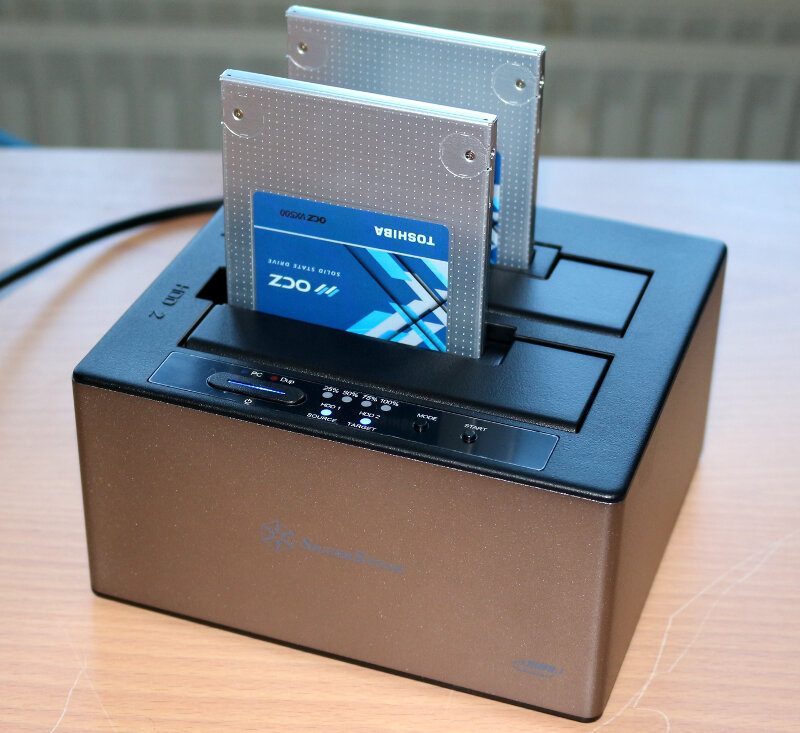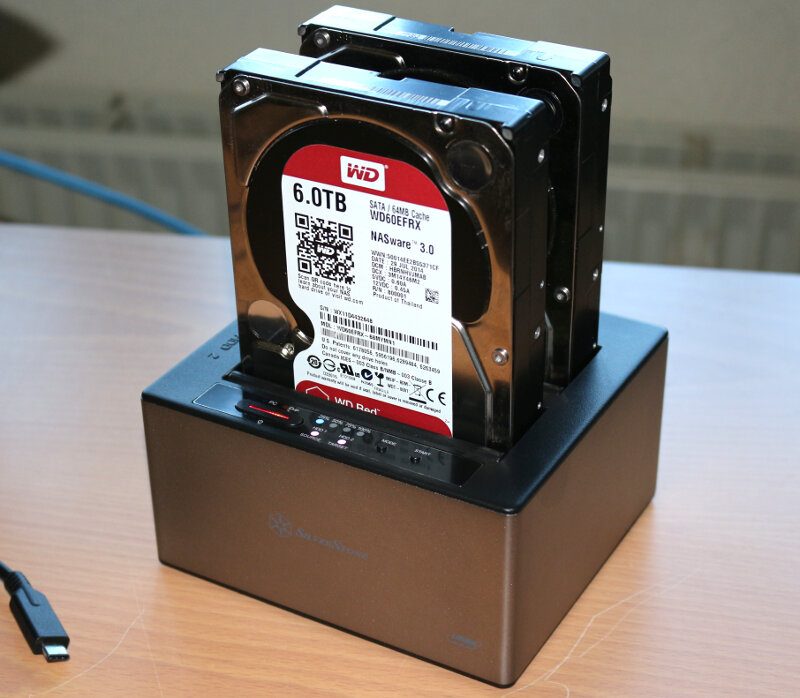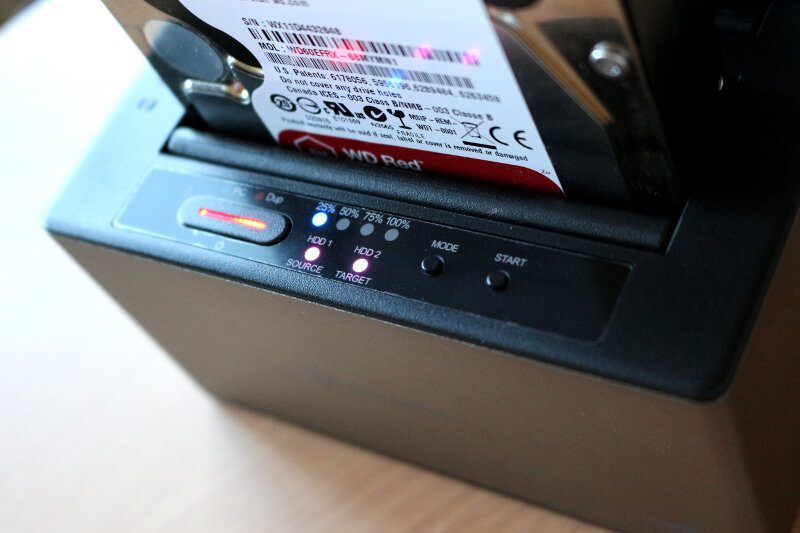SilverStone TS12C Dual Docking and Cloning Station Review
Bohs Hansen / 7 years ago
Test Systems, Software, & Methodology
Testing a docking station is quite easy. First, I’ll run a series of basic benchmark applications tests to test the throughput performance. These will give you a comparison to a direct SATA connection. The actual performance naturally depends on the inserted drive’s capabilities. For the performance tests, I’ll be using two Toshiba OCZ VX500 512GB drives.

Next, I’ll be testing the cloning feature. It isn’t really possible to show the cloning feature, but it works like it should. It isn’t the fastest process tho as it won’t be quicker than the inserted drives allow it to be. This is most noticeable with mechanical drives that perform between 100MB/s and 200MB/s only and feature huge capacities up to 10TB. For this test, I’ll be using two Western Digital WD RED 6TB HDDs.

Test system:
- Gigabyte GA-Z170X-Gaming 7-EU
- Intel Core i5-6600K
- EVGA GTX 980 SC
- Kingston Fury DDR4 2400MHz 32GB
- Patriot Hellfire NMVe M.2, 480GB
- be quiet! Dark Power Pro 10 850W
- Thermaltake Water 3.0 Ultimate
Software used:
- Anvil’s Storage Utilities
- ATTO Disk Benchmark
- AS SSD Benchmark
- CrystalDiskMark 64bit
- Windows 10 Pro
Cloning Test
It isn’t really possible to show the performance of the cloning as it is an offline process. I tried SSD to SSD, HDD to HDD and SSD to HDD and those tests were all successful. While there isn’t much to show here, it’s the part that took the longest time. Cloning 6TB of data, sector by sector, takes a long time.




















